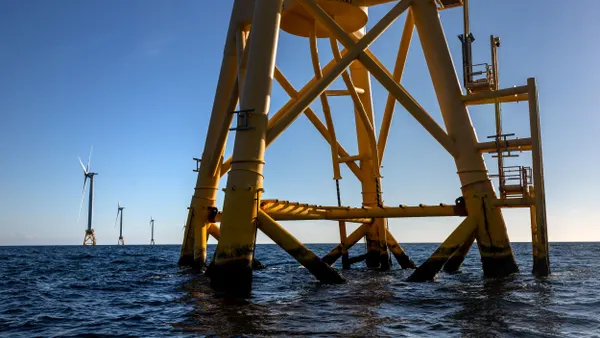Dive Brief:
-
A new study from the Iowa Department of Transportation predicts that by 2040, between 20% and 85% of traffic traveling on Interstate 80 in the state will be highly or fully automated, leading to fewer accidents and greater capacity, the Quad-City Times reported.
-
The study is part of a larger review of ways to upgrade the stretches of I-80 that run through rural areas, informing policymakers on how to handle growth particularly in the eastern part of the state.
-
The 65-percentage-point gap in automation potential indicates the challenges of forecasting use of a still-nascent technology. At 25% adoption, the potential for vehicle accidents is cut by 20%.
Dive Insight:
Connected and autonomous vehicle (CAV) technology is getting closer to the roads. In July, a U.S. House panel unanimously approved legislation that would govern CAV use. If it’s approved by Congress, the measure would require federal regulators to begin writing rules for CAVs within 18 months.
Currently, a key governing document for CAV in the U.S. has been a guide from the National League of Cities. In it, the nonprofit outlines different vehicle types, policy considerations, companies in the space and basic considerations for municipalities looking to implement a CAV program.
If the House bill passes, it would give a more clearly defined shape to the growing support for and interest in CAV technology among U.S. states and municipalities.
Fourteen states and the District of Columbia have enacted autonomous vehicle laws or other executive action concerning CAV use, according to Smart Cities Dive. While they still require a human in the driver’s seat to manually override errors, California is weighing new legislation that would remove that requirement by the end of this year.
Meanwhile, Ohio and Georgia, among other states, are outfitting roads to test CAV. In June, Rhode Island put out a request for information looking for companies familiar with the technology to share insights on potential partnerships, safety and security programs and how such work could get funding.
Before that technology hits the roads, however, it’s likely to spend some time in development on one of the growing number of CAV vehicle test sites. The U.S. Department of Transportation earlier this year named its top 10 CAV test sites, which included sites in California, Florida, Iowa, Michigan, Texas and Wisconsin.













